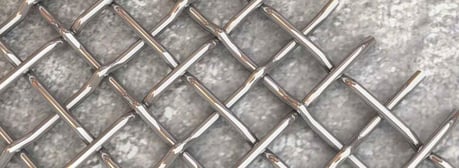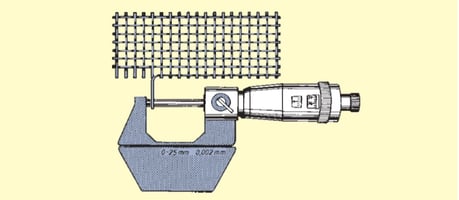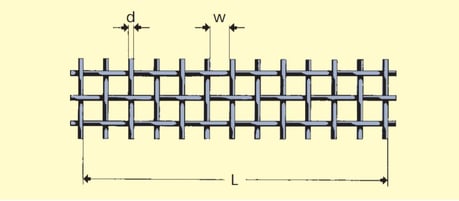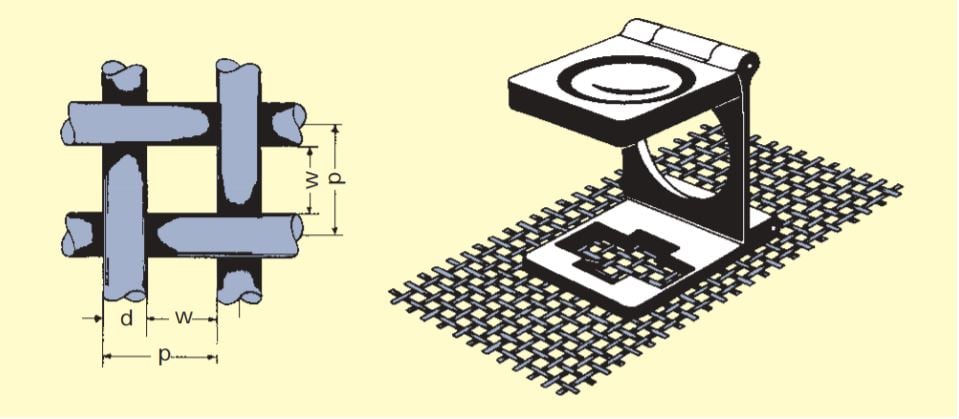How To Calculate the Wire Diameter and Aperture Size of Wire Mesh
From screening particles during a test sieve analysis to filtering out unwanted contaminants from molten polymers, woven wire mesh is proven to be one of the most versatile materials available. With the correct specifications, it can deliver the durability and stability needed to withstand heavy-duty applications, such as aggregate screening, as well as the required accuracy to extract solids from a substance to form a filter cake.
Now, while the parameters of woven wire mesh can be tailored to accommodate the needs of your operation, the wire diameter and aperture size of the mesh is possibly the most important specifications to be mindful of. This is because these specifications ultimately control how durable and accurate your wire mesh will be.
Having said that, how exactly is wire diameter and aperture size tested and verified?
For over 140 years, W.S. Tyler has been a prominent woven wire mesh supplier, helping countless industries with variating functions leverage the capabilities of wire mesh.
To help ensure your wire mesh solution performs as it should, this article will provide insight into:
- What woven wire mesh is
- Why wire diameter and aperture size are critical
- How wire diameter is tested
- How aperture size is tested
What Is Woven Wire Mesh?

Woven wire mesh is defined as a pre-determined amount of metallic wires that undergo a centuries-old weaving process to create a roll or sheet of woven wire cloth that features precise pore openings. It is considered one of the most versatile materials on the market as parameters such as wire diameter, aperture size (pore openings), weave pattern, and panel size are all methodically planned and fully customizable.
Why Are Wire Diameter and Aperture Size Important?
When designing wire mesh rolls, pieces, and components, the wire diameter and aperture size are critical mesh specifications.
Wire Diameter
The wire diameter used to construct your wire mesh plays an integral role in the durability and lifespan of the mesh. Now, while the thicker the wire diameter, the more durable your mesh will be, you must be mindful not to implement a wire diameter that will hinder the mesh from delivering the desired results.
That said, the material you are working with ultimately dictates the wire diameter you should employ.
If working with material that is coarse, corrosive, or abrasive, you will want to implement a thicker wire diameter. Using a wire diameter that is too thin may result in damaged mesh, which will lower its performance and potentially damage other components throughout your operation.
On the other hand, if the material you are working with is considered fine, such as confectionery sugar, wire diameters that are too thick will affect the stability of the mesh openings. This commonly results in plugged mesh openings.
Aperture Size
The aperture size that you specify when design wire mesh solutions dictate how easy individual particles pass through the mesh. This is particularly vital when attempting to manage the flow rate of a mesh filter.
Now, the aperture size you should use depends on the particle size you want to allow to pass through as well as the volume of waste buildup that will be present.
Having said that, using an appropriate aperture size will help ensure adequate flowrate is maintained while all the necessary particles are screened. Employing an aperture size that is not suited for the application will either allow unwanted particles to pass through or cause blinding throughout the mesh.
How Is Wire Diameter Tested?
Two methods can be used when attempting to identify the wire diameter of a piece of woven wire mesh. The one that you use ultimately depends on the physical properties of the mesh.
If the edges of the mesh have yet to be cut or the tips of the wires are exposed in any way, you can determine the wire diameter by using a micrometer screw to measure a single wire. If the aperture size is substantial enough, you can use various measurement instruments to measure the wire within the weave.

While the tolerance of the wire before its woven cannot be calculated after the weaving process, the nominal wire diameter is obtainable when the empirical weight formula is used.
How Is Aperture Size Tested?
To simplify the process of obtaining the aperture size of a wire mesh cloth, it is recommended that the measuring row method is employed. This method entails taking the number of pitches within a designated length.
You then divide this length by the number of pitches to identify the average pitch. By subtracting the wire diameter from the average pitch allows you to identify the aperture size.

When attempting to identify the arithmetic mean value of the aperture width, it is critical that the amount of pitches that are analyzed presents an adequate representative value.
It should be noted that when aperture widths are between 16mm and 1mm, ten pitches should be analyzed. If the aperture width is .1mm or smaller, 20 pitches should be analyzed.
Design Long-Lasting Wire Mesh With the Right Alloy
Woven wire mesh is a versatile material that can be used for a wide range of applications; however, it is often seen when developing a durable and accurate screening or filtration operation. In order for any given mesh solution to deliver optimal results, you must ensure the wire diameter and aperture size are methodically selected and tested.
But to further improve the longevity and performance of a mesh solution, you must identify an alloy that matches what you are trying to accomplish. By employing the right alloy, your wire mesh will deliver maximum resistance to elements such as corrosion and heat, which will help preserve the integrity of the mesh opening and increase its overall durability.
With over 140 years of experience, W.S. Tyler stands as a reliable woven wire mesh supplier that strives to become an extension of your team and help you make the most of your wire mesh solutions.
To learn more about the benefits associated with the various alloys used to construct woven wire mesh, read the following article:
About Ronnie Brown
Ronnie is the Content Writer for W.S. Tyler and has four years of experience as a professional writer. He strives to expand his knowledge on all things particle analysis and woven wire mesh to leverage his exceptional writing and graphic design skills, creating a one-of-a-kind experience for customers.




